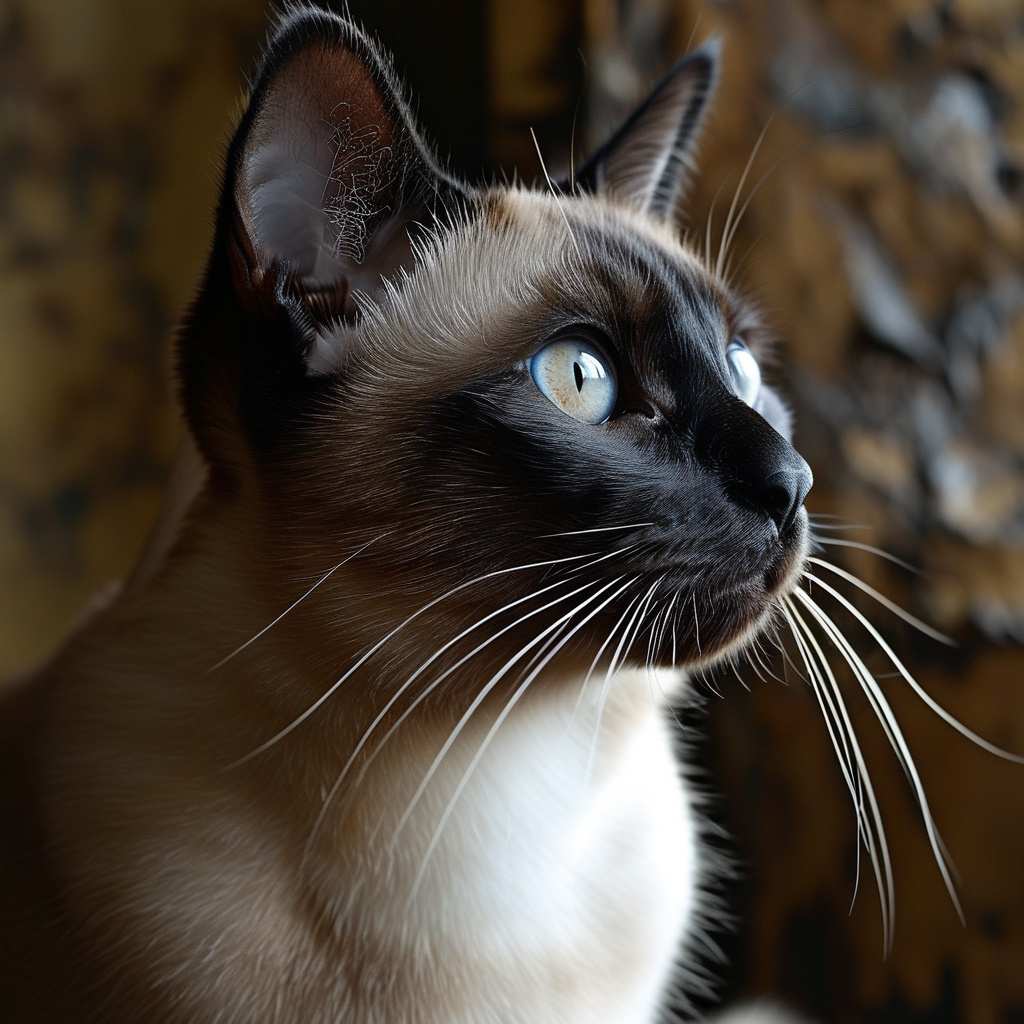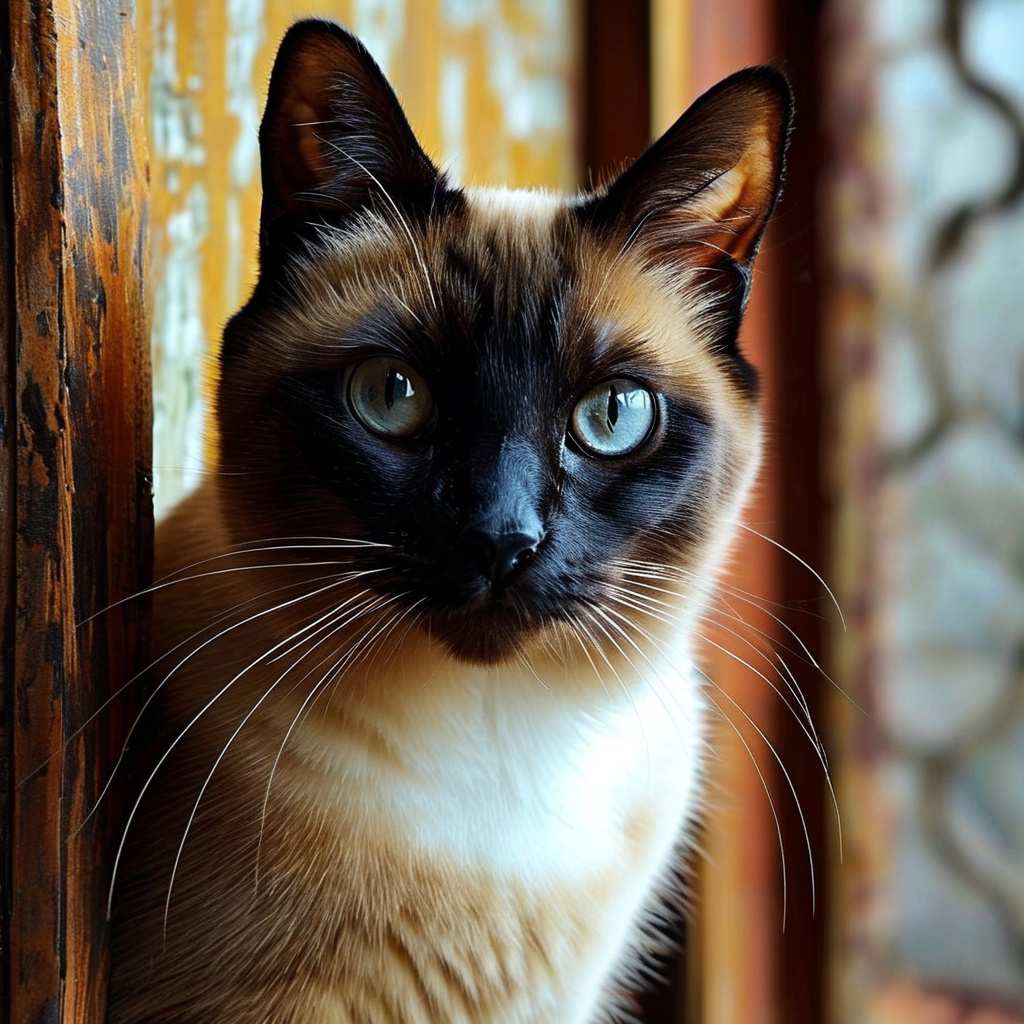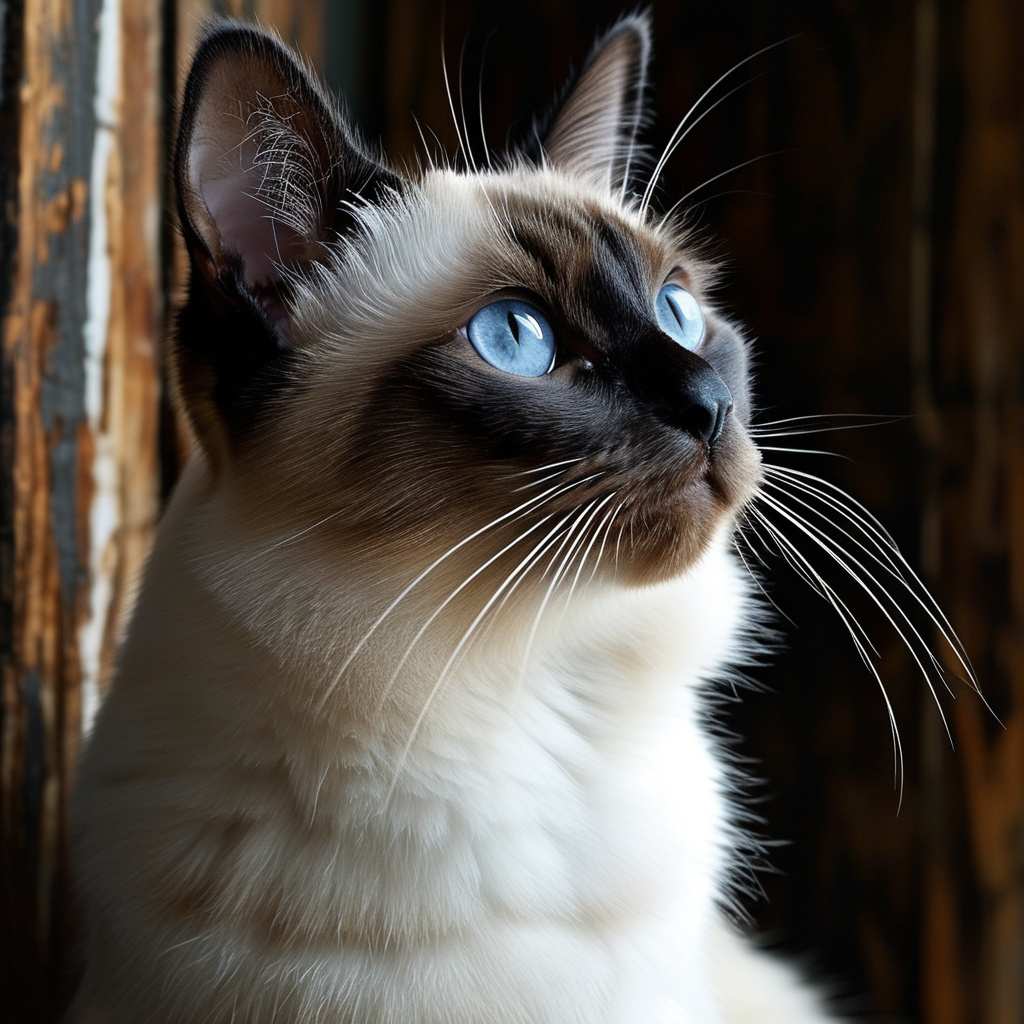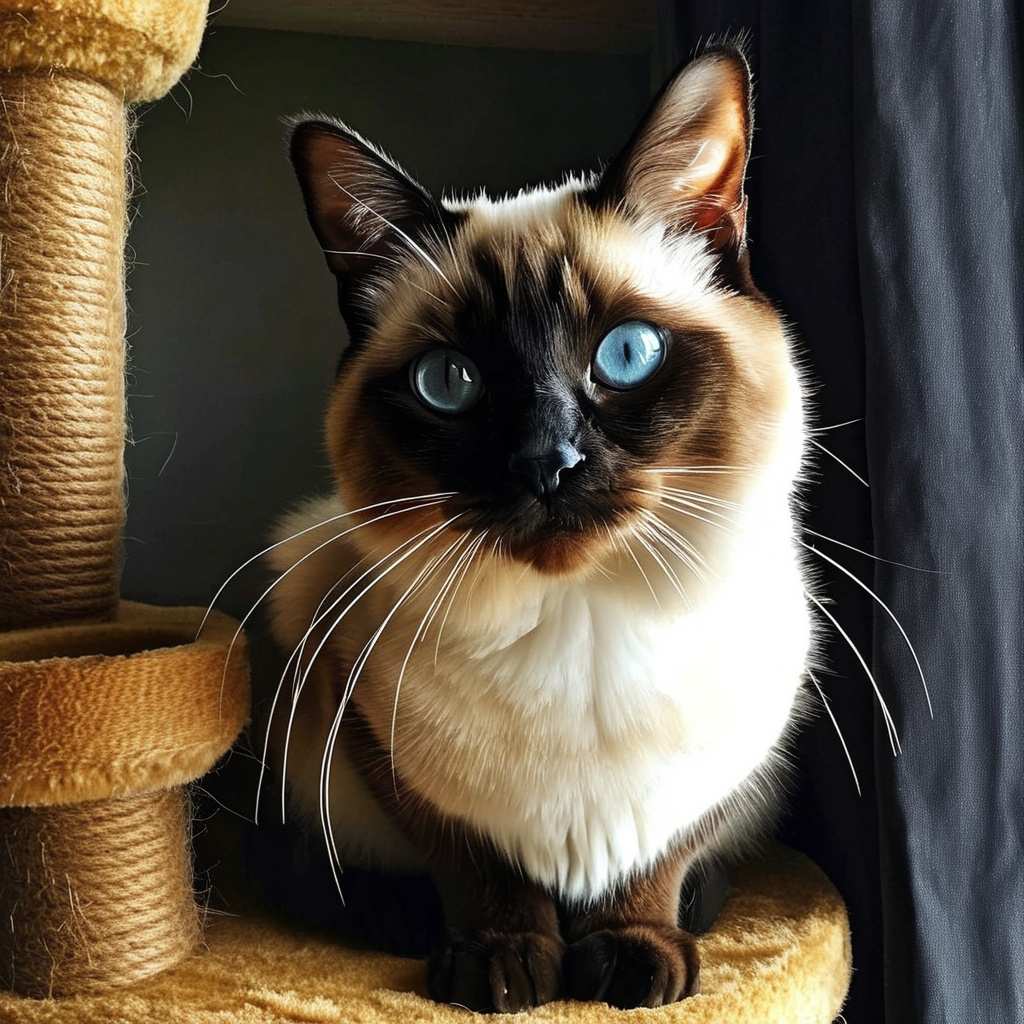 Introduction:
Introduction:
Siamese cats, known for their elegance, intelligence, and distinct appearance, are one of the oldest and most recognized cat breeds in the world. Originating in Thailand as early as 1350, these felines were once the cherished companions of royalty. Their unique features, such as their almond-shaped sapphire eyes and pointed coats, set them apart from other breeds. While their beauty is undeniable, Siamese cats also have specific grooming and health needs. They are lively, affectionate, and loyal, making them ideal companions for those who can match their energy and provide the attention they crave.
The first mention of cats resembling today’s Siamese comes from an animal book written in Thailand in 1350. This suggests that the Siamese is one of the oldest and longest-known breeds. However, its origin is not completely understood. The ancestors of the Siamese are said to be Bengal, Nubian and Asian domestic cats. It was their crossbreeding that may have created a new breed.
Related Post: Top 10 Common Feline Ailments That Require Veterinary Attention
At first, only royal families could afford Siamese cats.
In 1884 the British Consul received a pair of these cats from the King of Siam. This is how they came to Europe, where they were shown at exhibitions and in zoos.
 Silhouette
Silhouette
These are medium sized cats. The males are larger and more muscular than the females. The weight of males should be in the range of 3.5 – 5.5 kg and that of females 2.5 – 3.5 kg.
Related Post: Understanding Veterinary Diets: Purpose, Benefits, and Proper Usage
The characteristic features of Siamese cats are huge, disproportionate ears and a slightly hooked nose. The heads of these cats are wedge-shaped and triangular in shape. The outer ears should be an extension of the line of the face. The neck is slender and delicate. The body of the modern Siamese is slender, light, fine, and even athletic. The limbs are long and shapely, with small oval paws. This breed also has a long, thin, pointed tail. According to the standard, the eyes of the Siamese must be sapphire blue, and the colour should be as intense as possible. The eyes are medium in size, almond-shaped, slightly slanted, and set close together.
The coats of these cats are short and even. It consists of smooth and fine hairs. The following colours are permitted:
Seal Point – brown-black tabby markings on a fawn body.
Chocolate Point – very intense chocolate colour, ivory body
Lilac Point – grey-pink markings and almost white body
Blue Point – light grey body, deep silver and grey-blue tabby markings
Siamese are born completely white. Discolouration occurs around the second week of life. It darkens with age and, interestingly, with decreasing temperature. The colder the body parts, the more intense the colouration. The damaged hair will initially grow back to its base colour and then darken over time.
Related Post: Catnip and Feline Euphoria: A Closer Look at the Science Behind the Magic Herb
Grooming Siamese
Siamese are short-haired, so grooming them is not complicated. It is worthwhile to brush or gently comb your pet with a soft brush once a week. This will remove dead hairs and dust, leaving the coat shiny and refreshed. Do not bathe your cat without clear instructions from your veterinarian (e.g. for skin problems).
The health of Siamese Cats
Siamese cats have a genetic predisposition to various diseases. This does not mean that a given disease will necessarily occur, but it is an indication that should be considered when choosing a cattery from which to purchase your kitten. You should ask for the relevant documentation, including any tests that have been done. A cattery with no genetic problems will minimize the risk of disease.
Related Post: Understanding Common Cat Behaviors: A Guide for Caregivers
 The most common disease in Siamese is congenital amaurosis. There are several types of visual impairment, including
The most common disease in Siamese is congenital amaurosis. There are several types of visual impairment, including
Nystagmus
strabismus
Corneal necrosis
retinal atrophy
Glaucoma
Nystagmus (rotational, vertical, horizontal) may go away with time, or you may be able to help your cat manage it with exercises, such as having your cat focus on a specific object. Strabismus does not affect the quality of vision. Siamese cats are born with an outward squint, then the eyeballs move into a parallel position, and finally, they turn inward. Three other diseases make it difficult and uncomfortable for your cat to see, but in some cases, they can be treated surgically.
In addition to eye diseases, Siamese cats also suffer from skeletal disorders (mucopolysaccharidosis), dental problems (erosions, enamel wear, gingivitis), and palatal abnormalities (cleft palate, cleft lip). This breed is also more likely to develop lymphoma or small intestinal adenomas.
Siamese, being an oriental breed, often exhibit obsessive-compulsive behaviour called PICA syndrome. It is characterized by excessive sucking, chewing, or eating of objects that are not intended for consumption. This can include clothing, wires, dirt, paper, wood, or plastic. Many of these items can be dangerous to the health or life of the cat.
This breed is known for its incredible appetite. Most of these cats like to try new treats and will be tempted to try them at any time of the day. Therefore, it is worth getting your pet used to good, meaty food when they are young to keep them full and satisfied, and paying more attention to their weight later in life to prevent them from becoming overweight.
 Nature of Siamese Cats
Nature of Siamese Cats
Siamese cats are very happy, lively and confident cats. They are everywhere, they always want to be the center of attention, and in the absence of attention from the caretaker, they literally demand it. Some fans of the breed have given Siamese the nickname “dog character”. They love the company of people and other animals.
They bring toys and want to have fun. They want to be with their people all the time. However, they are quite dominant and also hate boredom. This is devastating to them and can lead to unwanted behaviour. They also need a lot of space. Any high vantage point, scratching post, swing, or racetrack is of interest to them. In addition to physical exertion, they also enjoy mental exertion. With a little patience and consistency, you can teach them many tricks and commands. They are intelligent cats and like to work with people. They adapt quickly to new situations.
These beautiful cats have been loyal and patient companions for many years. The average lifespan of a Siamese is 15-20 years. They spread their energy and joie de vivre all around them.
Interesting Facts about Siamese Cats:
Siamese semi-longhair cats are Balinese and originated in the United States through genetic mutation in litters of Siamese cats.
Thai cats are a breed that is said to refer to the appearance of Siamese cats from the 1950s. Just like the original Siamese cats, Thai cats are muscular and their torso is elongated.
These cats used to live in temples and belonged to wealthy and noble people.
In the past, the crossed eyes and broken tails of Siamese cats were considered royal traits.
Conclusion:
Siamese cats are a breed steeped in history, elegance, and personality. From their royal roots in ancient Thailand to their prominence in modern homes, these felines continue to captivate cat lovers worldwide. Their affectionate and playful nature, combined with their intelligence, makes them highly interactive pets. However, their predisposition to certain health issues and their strong need for attention should be considered when bringing a Siamese into your home. For those who are prepared for their vibrant character, Siamese cats make loyal, engaging, and lifelong companions, spreading joy wherever they go.
FAQs:
- What is the origin of the Siamese cat?
Siamese cats originated in Thailand, with mentions of them dating back to 1350. They were once exclusive to royal families. - What are the physical characteristics of Siamese cats?
Siamese cats have wedge-shaped heads, large ears, almond-shaped sapphire blue eyes, and slender, athletic bodies. Their coats are short, smooth, and come in various point colors. - What are the common health issues in Siamese cats?
Siamese cats are prone to eye diseases such as nystagmus and retinal atrophy, as well as skeletal disorders, dental problems, and a higher risk of developing lymphoma. - How should I care for a Siamese cat’s coat?
Due to their short hair, Siamese cats require minimal grooming. Weekly brushing with a soft brush is enough to remove dead hairs and keep their coat looking sleek. - Are Siamese cats good with families and other pets?
Yes, Siamese cats are social, playful, and affectionate, often likened to dogs for their loyal and interactive nature. They enjoy the company of both people and other pets. - Why do Siamese cats change color with temperature?
Siamese cats are born white, and their coat darkens over time, particularly in cooler areas of their bodies. This is due to temperature-sensitive pigmentation. - What is PICA syndrome in Siamese cats?
PICA syndrome refers to obsessive behaviors in Siamese cats where they chew or eat non-food items like clothing, wires, or paper, which can be dangerous for their health.
References:
- PetMD – Siamese Cat Breed Health and Care
- The Spruce Pets – Siamese Cat Breed Profile
- Cat Fanciers’ Association – Siamese Breed Information
- Purina – Siamese Cat Overview
- The Cat Fancy – Siamese Cats
- Cornell University College of Veterinary Medicine – Siamese Cats Health
- American Kennel Club – Siamese Cats (Note: Page currently unavailable but AKC is a reputable source)